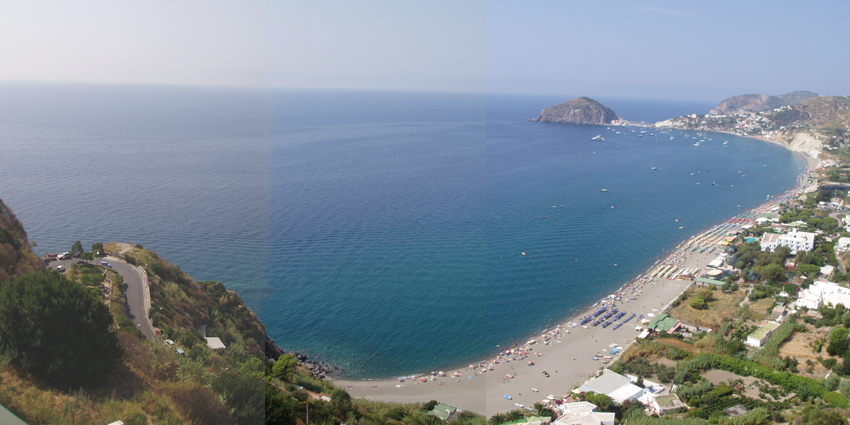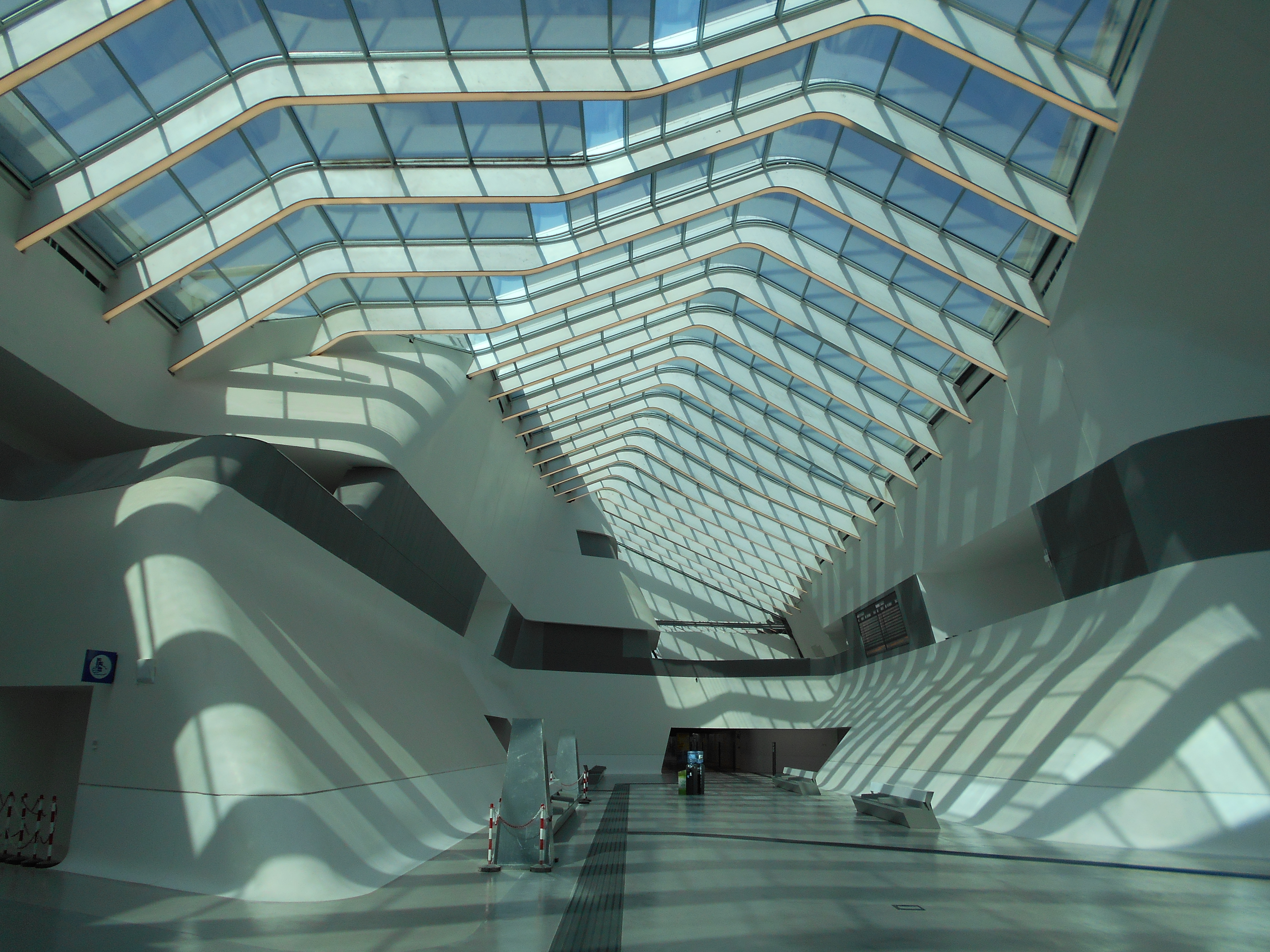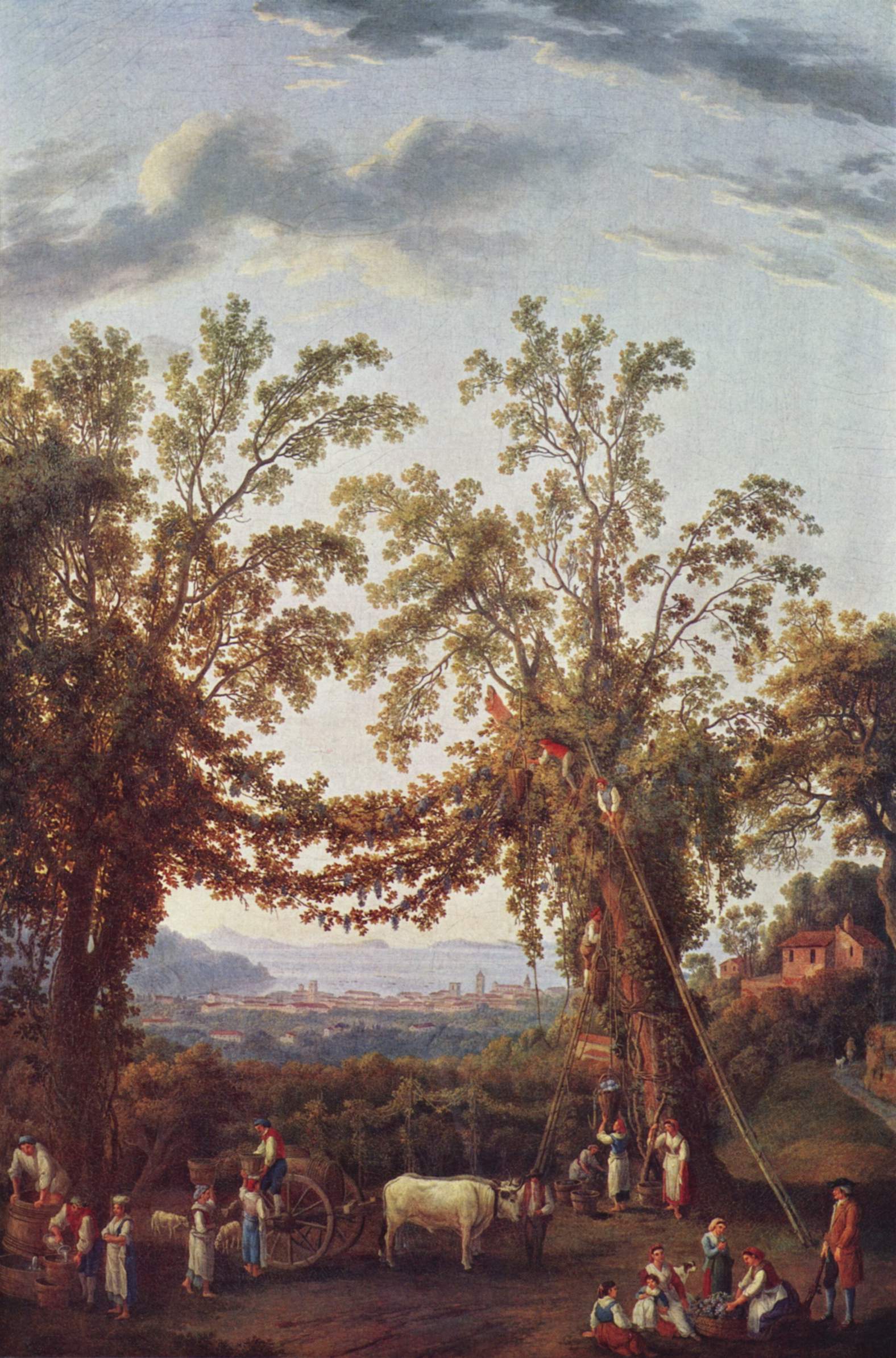|
Ducatus Neapolitanus
The Duchy of Naples ( la, Ducatus Neapolitanus, it, Ducato di Napoli) began as a Byzantine province that was constituted in the seventh century, in the reduced coastal lands that the Lombards had not conquered during their invasion of Italy in the sixth century. It was governed by a military commander (''dux''), and rapidly became a ''de facto'' independent state, lasting more than five centuries during the Early and High Middle Ages. Naples remains a significant metropolitan city in present-day Italy. First local duchy In 661, Naples obtained from the emperor Constans II the right to be ruled by a local duke, one Basil, whose subjection to the emperor soon became merely nominal. Among his titles were ''patrikios'' ("patrician") and ''hypatos'' ("consul"). At that time the ''Ducatus Neapolitanus'' controlled an area corresponding roughly to the present day Province of Naples, encompassing the area of Vesuvius, the Campi Flegrei, the Sorrentine Peninsula, Giugliano, Aversa, A ... [...More Info...] [...Related Items...] OR: [Wikipedia] [Google] [Baidu] |
Naples
Naples (; it, Napoli ; nap, Napule ), from grc, Νεάπολις, Neápolis, lit=new city. is the regional capital of Campania and the third-largest city of Italy, after Rome and Milan, with a population of 909,048 within the city's administrative limits as of 2022. Its province-level municipality is the third-most populous metropolitan city in Italy with a population of 3,115,320 residents, and its metropolitan area stretches beyond the boundaries of the city wall for approximately 20 miles. Founded by Greeks in the first millennium BC, Naples is one of the oldest continuously inhabited urban areas in the world. In the eighth century BC, a colony known as Parthenope ( grc, Παρθενόπη) was established on the Pizzofalcone hill. In the sixth century BC, it was refounded as Neápolis. The city was an important part of Magna Graecia, played a major role in the merging of Greek and Roman society, and was a significant cultural centre under the Romans. Naples served a ... [...More Info...] [...Related Items...] OR: [Wikipedia] [Google] [Baidu] |
Constans II
Constans II ( grc-gre, Κώνστας, Kōnstas; 7 November 630 – 15 July 668), nicknamed "the Bearded" ( la, Pogonatus; grc-gre, ὁ Πωγωνᾶτος, ho Pōgōnãtos), was the Eastern Roman emperor from 641 to 668. Constans was the last attested emperor to serve as consul, in 642, although the office continued to exist until the reign of Leo VI the Wise (r. 886–912). His religious policy saw him steering a middle line in disputes between the Orthodoxy and Monothelitism by refusing to persecute either and prohibited discussion of the natures of Jesus Christ under the Type of Constans in 648. His reign coincided with Muslim invasions under Mu'awiya I in the late 640s to 650s. Constans was the first Roman emperor to visit Rome since the fall of the Western Roman Empire in 476, and the last emperor to visit Rome while it was still held by the Empire. Origins and early career Constans was born on 7 November 630 in Constantinople, the East-Roman capital. His father Constan ... [...More Info...] [...Related Items...] OR: [Wikipedia] [Google] [Baidu] |
Capri
Capri ( , ; ; ) is an island located in the Tyrrhenian Sea off the Sorrento Peninsula, on the south side of the Gulf of Naples in the Campania region of Italy. The main town of Capri that is located on the island shares the name. It has been a resort since the time of the Roman Republic. Some of the main features of the island include the (the little harbour), the Belvedere of Tragara (a high panoramic promenade lined with villas), the limestone crags called sea stacks that project above the sea (the ), the town of Anacapri, the Blue Grotto (), the ruins of the Imperial Roman villas, and the vistas of various towns surrounding the Island of Capri including Positano, Amalfi, Ravello, Sorrento, Nerano, and Naples. Capri is part of the region of Campania, Metropolitan City of Naples. The town of Capri is a and the island's main population centre. The island has two harbours, and (the main port of the island). The separate of Anacapri is located high on the hills to the w ... [...More Info...] [...Related Items...] OR: [Wikipedia] [Google] [Baidu] |
Procida
Procida (; nap, Proceta ) is one of the Flegrean Islands off the coast of Naples in southern Italy. The island is between Cape Miseno and the island of Ischia. With its tiny satellite island of Vivara, it is a ''comune'' of the Metropolitan City of Naples, in the region of Campania. Etymology The island derives its name from the Latin name ''Prochyta''. Προχύτη/Prochýtē means 'poured out' in Ancient Greek. According to another theory, ''Prochyta'' comes from the Ancient Greek verb ''prokeitai'', meaning 'it lies forth', because of the appearance of the island seen from the sea. Geography Procida is located between Capo Miseno and the island of Ischia. It is less than . Its coastlines, very jagged, are . The ''Terra Murata'' hill is the highest point on the island (). Geologically, Procida was created by the eruption of four volcanoes, now dormant and submerged. History Ancient history Some Mycenaean Greek objects from the 16th to 15th centuries BCE have been found ... [...More Info...] [...Related Items...] OR: [Wikipedia] [Google] [Baidu] |
Ischia
Ischia ( , , ) is a volcanic island in the Tyrrhenian Sea. It lies at the northern end of the Gulf of Naples, about from Naples. It is the largest of the Phlegrean Islands. Roughly trapezoidal in shape, it measures approximately east to west and north to south and has about of coastline and a surface area of . It is almost entirely mountainous; the highest peak is Mount Epomeo, at . The island is very densely populated, with 62,000 residents (more than 1,300 inhabitants per square km). Ischia is also well known for its thermal water and thermal gardens used since ancient times. Its volcanic nature makes Ischia one of the largest spas in Europe. Ischia's thermal waters are alkaline. Already the first Euboic settlers (8th century BC), as evidenced by the numerous archaeological finds found in the site of Pithecusa and preserved in thArchaeological Museum of Villa Arbustoin Lacco Ameno, appreciated and used the waters of the island's thermal springs. The Greeks, in fact, used ... [...More Info...] [...Related Items...] OR: [Wikipedia] [Google] [Baidu] |
Nola
Nola is a town and a municipality in the Metropolitan City of Naples, Campania, southern Italy. It lies on the plain between Mount Vesuvius and the Apennines. It is traditionally credited as the diocese that introduced bells to Christian worship. History Prehistory Excavations at Nola-Croce del Papa have uncovered extensive evidence of a small village quickly abandoned at the time of the Avellino Eruption in the 17th century BC. This powerful eruption from Mount Vesuvius caused the inhabitants to leave behind a wide range of pottery and other artefacts. The foundations of their buildings are also preserved in imprints among the mud left by the eruption. Antiquity Nola was one of the oldest cities of Campania, with its most ancient coins bearing the name Nuvlana. It was later said to have been founded by the Ausones, who were certainly occupying the city by BC. It once vied in luxury with Capua. During the Roman invasion of Campania in the Samnite War in 328 ... [...More Info...] [...Related Items...] OR: [Wikipedia] [Google] [Baidu] |
Afragola
Afragola (; nap, Afrahola , ) is a city and ''comune'' in the Metropolitan City of Naples, in Italy. It is one of the 100 largest Italian cities (the ones that have a population of more than 63,000 inhabitants). The communal territory, measuring , borders the municipalities of Acerra, Casalnuovo di Napoli, Caivano, Cardito and Casoria, forming a single metropolitan area of around 100,000 inhabitants. The ''comune'' of Afragola is one of the most densely populated of the country. History The area of modern Afragola was already settled in ancient times by the Samnites. Older remains, belonging to an early Bronze Age settlement buried by a Vesuvius eruption in the 19th century BC, were found in 2005. According to a tradition now recognized as false, the town was founded in the Middle Ages, in 1140, by Roger II of Sicily, who assigned the land to its veterans. It is more likely that the city stemmed from the merger of several villages and churches already existing here. The te ... [...More Info...] [...Related Items...] OR: [Wikipedia] [Google] [Baidu] |
Aversa
Aversa () is a city and ''comune'' in the Province of Caserta in Campania, southern Italy, about 24 km north of Naples. It is the centre of an agricultural district, the ''Agro Aversano'', producing wine and cheese (famous for the typical buffalo mozzarella). Aversa is also the main seat of the faculties of Architecture and Engineering of the ''Seconda università degli studi di Napoli'' (Second University of Naples). With a population of 52,974 (2017), it is the second city of the province after Caserta. Geography Aversa is located near the city of Naples; it is separated by only 24 kilometres from Naples and by 26 kilometres from Caserta, the administrative centre of the province of the same name. The municipality borders Carinaro, Casaluce, Cesa, Frignano, Giugliano in Campania, Gricignano di Aversa, Lusciano, San Marcellino, Sant'Antimo, Teverola and Trentola Ducenta. It is located in a fertile coastal plain north of Naples, thus serving as a market for agricultur ... [...More Info...] [...Related Items...] OR: [Wikipedia] [Google] [Baidu] |
Giugliano In Campania
Giugliano in Campania , also known simply as Giugliano, is a city and ''comune'' in the Metropolitan City of Naples, Campania, Italy. , it had some 124,000 inhabitants,Source : 2016 making it the most populated Italian city that is not a provincial capital. History In 5th-4th century BCE the territory of Giugliano was settled by the , who founded, among the many cities, |
Sorrento
Sorrento (, ; nap, Surriento ; la, Surrentum) is a town overlooking the Bay of Naples in Southern Italy. A popular tourist destination, Sorrento is located on the Sorrentine Peninsula at the south-eastern terminus of the Circumvesuviana rail line, within easy access from Naples and Pompei. The town is widely known for its small ceramics, lacework and marquetry (woodwork) shops. The Sorrentine Peninsula has views of Naples, Vesuvius and the Isle of Capri. The Amalfi Drive, connecting Sorrento and Amalfi, is a narrow road along the high cliffs above the Tyrrhenian Sea. Ferries and hydrofoils connect the town to Naples, Amalfi, Positano, Capri and Ischia. Limoncello, a digestif made from lemon rinds, alcohol, water and sugar, is produced in Sorrento along with citrus fruit, wine, nuts and olives. History Origins The Roman name for Sorrento was . From the 8th century BC the area had the presence of a community of indigenous villages, which was a crossing point for Etruscan ... [...More Info...] [...Related Items...] OR: [Wikipedia] [Google] [Baidu] |
Campi Flegrei
The Phlegraean Fields ( it, Campi Flegrei ; nap, Campe Flegree, from Ancient Greek 'to burn') is a large region of supervolcanic calderas situated to the west of Naples, Italy. It was declared a regional park in 2003. The area of the caldera consists of 24 craters and volcanic edifices; most of them lie under water. Hydrothermal activity can be observed at Lucrino, Agnano and the town of Pozzuoli. There are also effusive gaseous manifestations in the Solfatara crater, the mythological home of the Roman god of fire, Vulcan. This area is monitored by the Vesuvius Observatory. It is considered a supervolcano. The area also features bradyseismic phenomena, which are most evident at the Macellum of Pozzuoli (misidentified as a temple of Serapis): bands of boreholes left by marine molluscs on marble columns show that the level of the site in relation to sea level has varied. Geological phases Three geological phases or periods are recognised and distinguished. * The First P ... [...More Info...] [...Related Items...] OR: [Wikipedia] [Google] [Baidu] |
Vesuvius
Mount Vesuvius ( ; it, Vesuvio ; nap, 'O Vesuvio , also or ; la, Vesuvius , also , or ) is a somma-stratovolcano located on the Gulf of Naples The Gulf of Naples (), also called the Bay of Naples, is a roughly 15-kilometer-wide (9.3 mi) gulf located along the south-western coast of Italy (province of Naples, Campania region). It opens to the west into the Mediterranean Sea. It i ... in Campania, Italy, about east of Naples and a short distance from the shore. It is one of several volcanoes forming the Campanian volcanic arc. Vesuvius consists of a large volcanic cone, cone partially encircled by the steep rim of a summit caldera, resulting from the collapse of an earlier, much higher structure. The eruption of Mount Vesuvius in AD 79 destroyed the Roman Empire, Roman cities of Pompeii, Herculaneum, Oplontis, Stabiae, and several other settlements. The eruption ejected a cloud of volcanic rock, stones, volcanic ash, ashes and volcanic gases to a height of , vo ... [...More Info...] [...Related Items...] OR: [Wikipedia] [Google] [Baidu] |







